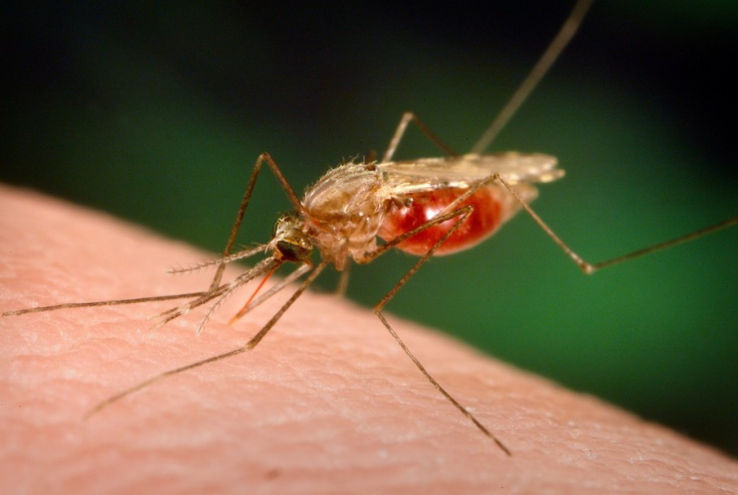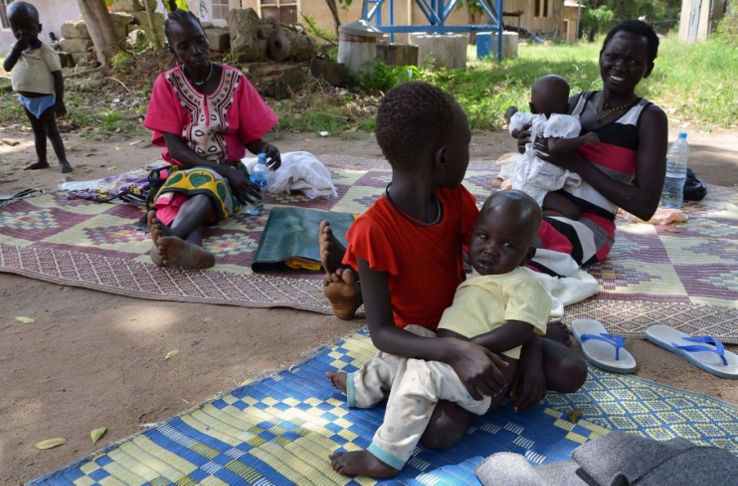The genes behind malaria resistance may reveal an intriguing evolutionary history

Scientists have identified new sets of genes that may make people resistant to malaria.
Caused by a mosquito-transmitted parasite, malaria kills over half a million people each year -- most of them young children. But for all the hundreds of thousands of children who die of the disease, many more show an incredible resistance to it. In Africa, where the parasite is everywhere, plenty of individuals never become ill from it.
Scientists have long looked for genetic differences in these fortunate individuals -- and they've already found a few. The most famous one is the gene that causes sickle cell anemia: While two copies of that gene cause a disease that's devastating in its own right, a single copy creates a healthy child with strong malarial resistance.
In a study published Wednesday in Nature, researchers report at least one confirmed new set of genes that aids in resistance. They've also provided dozens of other areas of the genome that they believe could be of note.
The research was done by MalariaGEN, an international network of scientists and clinicians spread across Africa, Asia and other malaria-endemic regions of the world, which is funded primarily by the Wellcome Trust. The study is one of the largest ever of its kind, using over 20,000 samples from eight different African populations.
To find the areas associated with resistance, the researchers scanned the entire genomes of healthy and sick children. With enough samples, scientists can filter out the noise -- the random differences and mutations that have nothing to do with malaria -- and find what actually sets the healthy children apart.
They found variations that sit very close to a cluster of genes that code for proteins called glycophorins. Scientists know that these proteins are somehow involved in the malarial parasite's invasion of red blood cells.
"What makes it particularly interesting is that the region we can show is associated with protection happens to be right up against a set of genes we know are related to how malaria invades the red blood cell," study author Dominic Kwiatkowski of the Wellcome Trust Sanger Institute and the Wellcome Trust Centre for Human Genetics told The Post. "We know they do that by a complex process, and we know we don’t understand that process, so figuring that out is kind of a holy grail."
In Kenyan children, having the right variation in these genes lead to a 40 percent drop in the risk of severe malaria. In other regions, the effect was slightly less pronounced.
"It’s often a challenge, when we observe things in the lab, to know what they do in the real world," Kwiatkowski said. "The genetic change around that area of the genome changes the risk of getting malaria."
A girl holds her younger brother, who is being treated for malaria in Juba (CHARLES LOMODONG/AFP/Getty Images)

There are a few other things that make the area of the genome in question -- called a locus -- particularly intriguing.
The locus sits close to an area of the genome where humans and chimps are known to share specific combinations of genes. That's not a common phenomenon -- our evolutionary separation happened too long ago. We may share many genes with chimpanzees, but it's rare for them to cluster together in the same combinations.
And that could mean that these genetic variations have been around for a very long time.
"For something to have stayed in the population so long, well -- there must be something keeping it there," Kwiatkowski said.
Kwiatkowski and his team suspect that the variation might be subject to something called balancing selection -- just like the sickle cell variation -- where genes are selected because of their ability to protect against malaria, but are kept from becoming too common because of their potential downsides.
"It would be maintained at a sort of intermediate frequency," Kwiatkowski said, "implying that it had both beneficial and deleterious effects."
The study also highlights another possible clue that could warrant further investigation. Many of the most robust variations seem related to activity on the surface of cells.
"A story is starting to emerge that malaria is somehow connected with evolutionary forces that have been driving changes in the human genome for millions of years," he said. "And a lot of these are tied to activity on the surface of the cell."
Finding and studying the different mechanisms by which some genetic variations prevent malaria could help us develop vaccines and treatments for the disease.
The team is also curious about the increased protection the variation seemed to give to children in Kenya, while those in western populations showed slightly less resistance. They believe it may have something to do with the genetic differences between the parasites themselves in different regions -- something scientists still don't know all that much about.
While the researchers involved in the study continue to map out more and more of these genetic loci, they're hopeful that other scientists can use the new findings to learn more about malaria. They've made their results -- including about 30 other loci with less robust evidence than their main find -- available for public use.
"We’re very hopeful that out of this will come some deep new insight into how the parasite interacts with the host," Kwiatkowski said.

